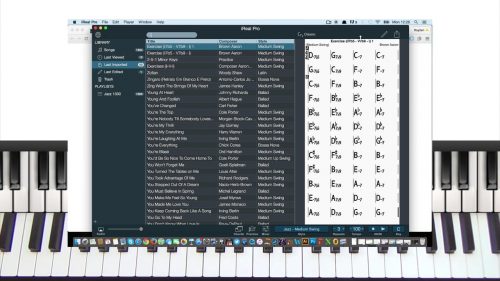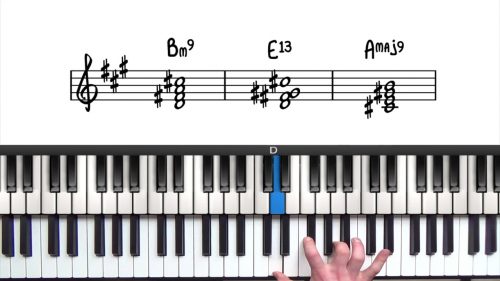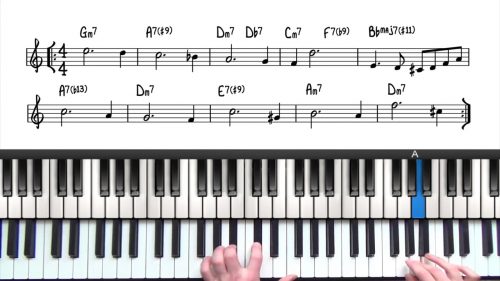Satin Doll Tutorial Part 1
Welcome to part 1 of this jazz standard tutorial on Satin Doll by Duke Ellington.
Most commonly played in C Major, the tune follows a standard 32 Bar A-A-B-A form.
If you’ve never listening to this tune before, check out the version performed by Ellington and his band. Other great recordings of this tune are the versions by McCoy Tyner with his extensive use of block chords and also Michel Petruciani’s solo piano performance.
We’re going to start off by playing through the form with left hand voicings and then we will create some 2 handed voicings and play through the form again.
In part 2 of this tutorial, we will explore the stylistic aspects of the tune. We’ll start with some left hand bass patterns and then move into rootless comping voicings including the 4 way close block chord, red garland voicings and finally quartal voicings derived from pentatonic harmony.
Practice Tips
Here is an overview on how to set up the iRealPro App correctly:
-
Make sure you have “Piano” turned all the way down… you are the piano so it’s not needed.
-
Change drums to “click on 2&4” - when playing with a swing feel, the drummer will emphasise beats 2 & 4 with the hi hat and so it’s good to be hear these beats accented. That way, if you ever play with a drummer, your ears and body will be calibrated with listening for the 2&4 and it will help you stay in time.
-
Set the repeats to 20 so that you can keep cycling around the form and if you are playing swing, 120 bpm is a nice relaxed tempo to start with.





Love this. Duke loves to swing. Thanks for this one. Excellent choice.
Glad you enjoyed the tutorial Adam!
Cheers, Hayden
I have noticed that in many of your tutorials when playing a dominant chord with a 5th in the melody that you prefer a rootless chord over one in which you play the root. Do you prefer the sound or find it easier to play than one with a 1-3 wide spacing in the left hand. Any other thoughts? Thanks